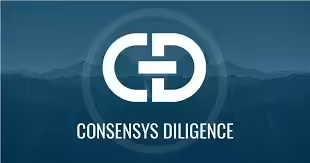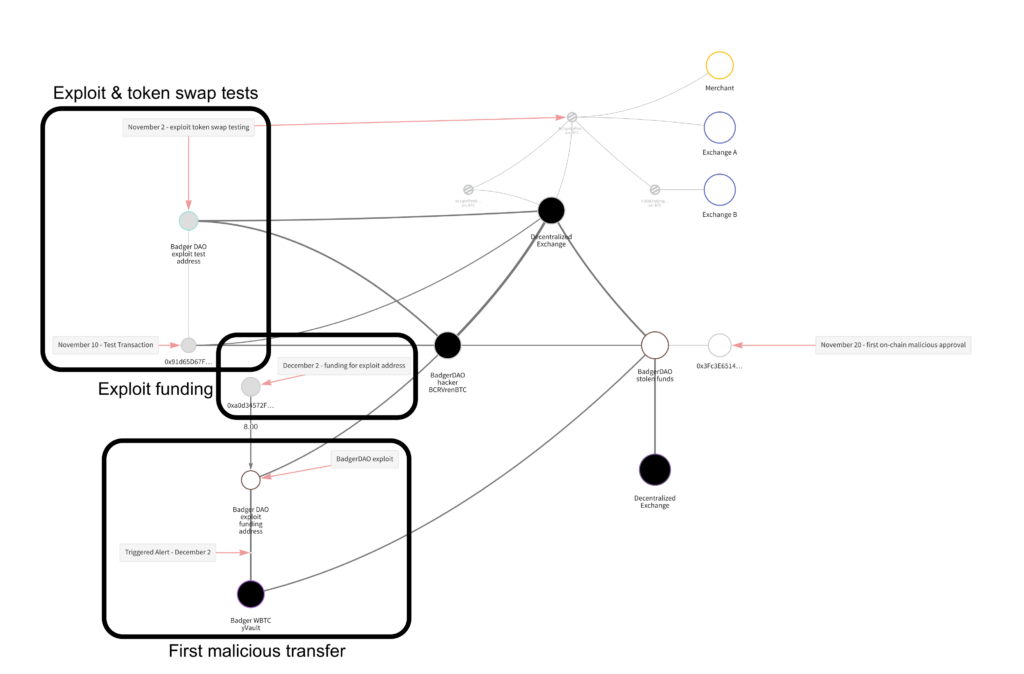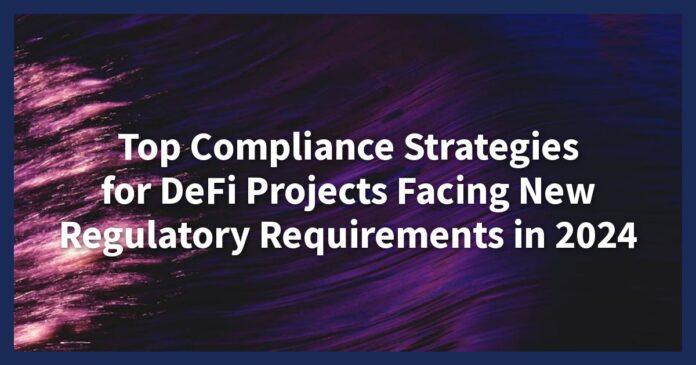Navigating the murky waters of DeFi, compliance plays a crucial role as new regulations emerge. DeFi projects, propelled by innovation, now face the pressing need to align with these sweeping legislative demands. The rise of decentralized finance hasn’t gone unnoticed by regulators. As the regulatory landscape shifts, project leaders must craft effective compliance strategies for DeFi projects to safeguard their operations and user interests. This post unpacks the most effective compliance techniques, equipping developers and stakeholders with the insights needed to thrive under new constraints. Without robust compliance frameworks, the potential for growth and trust in DeFi could seriously wane. Exploring these strategies will help ensure that projects not only survive but prosper in this new era of financial autonomy.
Understanding Regulatory Landscape for DeFi
Navigating the murky waters of regulatory compliance is crucial for any DeFi project aiming for long-term success. As the decentralized finance industry grows, it’s becoming ever more critical to stay abreast of new laws and guidelines. So, what are the key regulations and trends impacting DeFi today?
Key Regulations Impacting DeFi
In the bustling world of DeFi, compliance strategies for DeFi projects often revolve around a few core regulations. These are primarily aimed at preventing fraud and ensuring the safekeeping of investor funds. Among the most important are:
- Anti-Money Laundering (AML): AML rules are designed to prevent money laundering and other illicit activities. DeFi projects must implement robust systems to trace transactions and identify suspicious patterns, creating a transparent environment for users.
- Know Your Customer (KYC): KYC procedures help verify the identity of users, minimizing the risk of fraud. Although DeFi’s decentralized nature complicates full compliance, projects are innovating ways to balance user privacy with regulatory needs.
- Securities Laws: Many DeFi tokens might be seen as securities, making them subject to strict regulations. Projects must analyze whether they offer or trade securities and ensure they meet legal requirements, which often includes registration or exemption.
These regulations aren’t mere obstacles; they play a pivotal role in building trust and credibility within the community, something no DeFi project can afford to overlook.
Global Regulatory Trends
Different countries have varied approaches to DeFi, which can make compliance seem like a complex puzzle. Here’s a snapshot of what’s happening across the globe:
- The United States: The U.S. adopts a stringent approach, with the SEC closely scrutinizing DeFi initiatives. This means projects must be extra cautious, often necessitating legal counsel to navigate the nuanced landscape.
- European Union: Europe has taken steps towards comprehensive regulation with the Markets in Crypto-Assets (MiCA) framework [[mica. This aims to establish uniform standards across member countries, which may offer more predictability for projects operating in this region.
- Asia: Countries like Singapore and Japan are generally more receptive to DeFi, crafting regulations to encourage innovation while ensuring consumer protection. They often act as gateways for DeFi projects looking to tap into the Asian market.
- Cross-Border Implications: Operating across borders introduces additional layers of complexity. DeFi projects must carefully assess the regulatory requirements in each jurisdiction where they operate, understanding that a misstep in one country could have ripple effects elsewhere.
These trends highlight the necessity for strategic planning and the potentially huge impact of global regulatory changes on DeFi operations. Compliance strategies for DeFi projects should therefore include active monitoring of international regulatory developments, ensuring they’re prepared for shifts in policy that can affect their business model.
Related read: Telegram CEO Arrested: What Happened and How It Affects Toncoin
Core Compliance Strategies for DeFi Projects
Navigating the evolving landscape of DeFi can feel like steering a ship through stormy seas. Compliance strategies for DeFi projects are essential life rafts, helping projects not only stay afloat but also thrive amid changing regulatory tides. These strategies form the backbone of a project’s legal framework, ensuring it meets both current and future requirements. Let’s explore some of the core strategies that DeFi projects can adopt.
Implementing Robust KYC Procedures
Know Your Customer (KYC) processes are like the gatekeepers of the financial world. They ensure that users are who they claim to be, thus safeguarding the system against fraudulent activities. With the rise of DeFi, robust KYC procedures have become even more crucial.
- Importance: KYC processes help in verifying the identity of users, making sure that individuals involved in transactions aren’t engaging in unlawful activities.
- Facilitating Compliance: Technologies like digital identity verification and blockchain-based solutions can streamline KYC processes. These tools offer quick and efficient ways to authenticate user identity, integrating smoothly with DeFi platforms to enhance compliance.
Adopting AML Policies
Anti-Money Laundering (AML) policies act as the sentinels against illegal financial behavior. They outline procedures to detect and prevent money laundering activities that can tarnish the reputation of DeFi projects.
- Integration with DeFi Protocols: DeFi platforms can integrate AML checks directly into their systems, using AI and machine learning to flag suspicious transactions. This proactive approach not only complies with regulations but also boosts user trust.
- Benefits: By ensuring AML compliance, DeFi projects can protect themselves from legal repercussions and maintain a positive standing with regulators.
Smart Contract Audits and Compliance

In the world of DeFi, smart contracts are the digital workhorses running everything from lending to trading. But even these need regular check-ups to ensure they are foolproof and compliant.
- Role of Audits: Regular smart contract audits can uncover vulnerabilities before they are exploited. By employing expert auditors, DeFi projects can ensure their contracts meet legal and security standards.
- Ensuring Compliance: These audits aren’t just about finding bugs; they also ensure that the contracts adhere to evolving regulatory requirements, fortifying the project’s defenses against potential scrutiny.
There are several smart contract auditing companies out there like consensys dilligence, Hacken, Solidproof etc. User should do their own research as these companies are quite pricey and they should always cehck the scope of the contract and what exactly is covered in the audit.
Transparent Reporting Mechanisms
Imagine building a transparent glass house where everything inside is visible, leaving no room for suspicion—that’s the idea behind transparent reporting in DeFi.
- Need for Transparency: Reporting mechanisms that clearly document all transactions and activities can help satisfy regulatory bodies. Transparency builds trust and shows a project’s commitment to accountability.
- Best Practices: Projects can implement technology-driven solutions like distributed ledgers for real-time transaction reporting. This approach not only meets compliance but also enhances the overall integrity of the system.
Incorporating these core compliance strategies equips DeFi projects to confidently face regulatory demands while fostering a secure and trustworthy ecosystem for their users.
Interesting read: USDC Becomes First Major MICA Compliant and Regulated Stablecoin in the European Economic Area (EEA)
Technological Solutions for Compliance
Navigating the choppy waters of new regulatory requirements can be daunting for DeFi projects striving for compliance. Yet, by embracing technological solutions, these projects can keep their heads above water. Employing smart tools and services helps ensure compliance while maintaining the core principles of decentralization. Let’s dive into some effective strategies that can aid in this journey.
Blockchain Analytics Tools

Blockchain analytics tools are like a magnifying glass for your digital ledger. They help monitor transactions meticulously, identifying any unusual or suspicious activities that could spell trouble down the line. These tools break down complex data into understandable pieces, ensuring that nothing slips through the cracks.
- Transaction Monitoring: Blockchain analytics tools provide real-time insights into transaction flows. This is crucial for spotting anomalies, such as sudden spikes in transaction volume or transactions from blacklisted addresses.
- Risk Assessment: By generating risk scores for specific transactions, these tools help assess potential compliance threats. This early detection system is similar to a smoke detector, alerting projects to investigate further before fires start.
- Pattern Recognition: As patterns are crucial in many fields, blockchain analytics tools excel at uncovering transaction patterns. This ability helps DeFi projects to recognize and respond to potential security or compliance risks—much like recognizing a familiar tune, even when it’s played on a new instrument.
- There are several players out there in blockchain analytics segment out there, almost all of them does about the same thing. But some tools give you risk assessment before a transaction is submitted to blockchain, while some tool works better in finding the flow of transactions. Both are important as one is usefull in risk mitigation, while the other comes handy for investigation. Chainalysis is one such tool.
Compliance-as-a-Service Solutions
Compliance-as-a-Service (CaaS) is emerging as a popular option for DeFi projects. Think of it as outsourcing the heavy lifting of compliance to experts who live and breathe regulations. CaaS solutions provide scalable and cost-effective ways to keep up with ever-changing rules.
- Expert Guidance: CaaS providers bring onboard a wealth of compliance knowledge. They serve as a compass to steer projects through regulatory hurdles without losing direction.
- Automated Processes: These services typically feature automated systems for identity verification, monitoring, and reporting. Automation reduces human error, similar to a reliable autopilot getting a plane safely to its destination.
- Adaptability: With regulatory landscapes shifting like sand dunes, CaaS solutions are designed to adapt swiftly. This flexibility ensures that DeFi projects are not caught off guard by sudden regulatory changes.
From blockchain analytics to compliance-as-a-service solutions, technological advancements offer powerful strategies for ensuring compliance in the rapidly evolving realm of DeFi. With the right tools, projects can confidently keep pace with regulatory demands while fostering innovation.
Challenges in Compliance for DeFi Projects
Navigating the seas of compliance is no small feat for DeFi projects. With the tide of regulatory requirements rising, these projects are under pressure to adjust their sails, all while maintaining their core values of decentralization. The journey is fraught with obstacles, but understanding these challenges is the first step in mapping out effective compliance strategies for DeFi projects.
Decentralization vs. Regulation
The very soul of DeFi lies in its decentralized nature, allowing users to trade, lend, and borrow without a central authority. However, what makes DeFi appealing also complicates compliance. Regulators seek to ensure consumer protection, prevent fraud, and maintain financial stability, aiming their gaze at DeFi’s uncharted territories.
- Tension at the Core: Like a tug-of-war, decentralization pulls one way, championing freedom and autonomy. Regulation pulls the other, advocating for oversight and accountability.
- The Middle Ground: Successful projects will view compliance not as a hindrance but as a competitive edge. They can build trust by weaving regulatory frameworks into their decentralized models without unraveling what makes DeFi unique.
This balancing act requires creativity and innovation. DeFi projects must find ways to integrate compliance seamlessly while keeping user empowerment at the forefront.
Rapidly Changing Regulations
Keeping up with rapidly evolving regulations is akin to trying to hit a moving target. As governments and financial authorities worldwide lay down new rules, DeFi projects are scrambling to adapt.
- A Steep Learning Curve: These changes require teams to quickly learn and apply complex legal concepts, much like students cramming for an exam.
- Adaptive Strategies Needed: To navigate this dynamic landscape, DeFi projects need strategies that are as flexible as they are robust. This means developing modular compliance approaches that can be swiftly updated as regulations shift.
A proactive stance is vital. By anticipating changes and staying ahead of regulatory trends, projects can minimize disruption and forge a path forward that aligns both with their vision and legal requirements.
In the quest for compliance, DeFi projects face an intricate web of challenges. Yet, with ingenuity and a commitment to innovation, they can chart a course that ensures both compliance and user empowerment.
Future of Compliance in DeFi
The decentralized finance (DeFi) sector is no stranger to change, and as regulations continue to emerge, projects must adapt quickly. Remaining compliant while fostering innovation is the tightrope every DeFi project must walk. How can these projects stay ahead in this ever-evolving environment? By preparing for future regulatory changes with smart, strategic actions.
Preparing for Future Regulatory Changes
For DeFi projects, staying compliant isn’t just about following the rules—it’s about anticipating them. Here are some effective strategies to navigate the regulatory landscape:
- Stay Informed and Educated
The first step is knowledge. Teams should keep up-to-date with global regulatory news. Having a dedicated team or officer to track changes can provide insights before they impact operations. Attending webinars, joining industry groups, and building relationships with legal experts can offer valuable foresight. - Designing Flexible Protocols
A robust DeFi project is one that can pivot when needed. Designing protocols that are both flexible and resilient allows projects to adjust to new regulations without major overhauls. This might involve creating modular components that can be swapped or updated as requirements change. - Implementing Regular Audits
Regular audits are crucial. Not just financial audits, but compliance checks that review procedures and policies. These audits can spotlight vulnerabilities and ensure that a project stays within the bounds of current, and even potential, regulations. - Engaging with Regulators
Being proactive in communication with regulators can turn potential adversaries into allies. By engaging in dialogue, DeFi projects can help shape regulations rather than being shaped by them. This approach builds trust and opens pathways for collaboration. - Community Governance and Feedback
Encourage community involvement in governance. Having a decentralized approach to decision-making can distribute the responsibility and gather diverse insights. This not only secures user trust but provides a wider base for regulatory strategies. - Leveraging Technology for Compliance
The right tools can make compliance less daunting. Automated solutions for KYC processes, transaction tracking, and risk assessment can keep projects on the right side of the law while saving time and resources.
By implementing these strategies, DeFi projects can not only comply with existing laws but also stay prepared for the unexpected. This foresight ensures a project’s longevity and its continued contribution to the financial ecosystem.
Conclusion
The road to compliance for DeFi projects may seem daunting, but the benefits of staying ahead of regulatory changes are substantial. By adopting robust compliance strategies, projects can enhance user trust, reduce legal risks, and ensure longevity in a rapidly evolving landscape.
Being proactive in addressing new regulatory requirements not only safeguards a project’s future but also positions it as a leader in the decentralized finance space. Projects are encouraged to continually assess their compliance frameworks to adapt to new challenges and opportunities.
Engaging in open dialogue with regulatory bodies can provide valuable insights and foster a cooperative environment. As the DeFi sector grows, exploring innovative solutions and fostering community collaboration becomes crucial.
Readers are invited to share their thoughts on how DeFi can further integrate compliance strategies without compromising innovation.








![Top 10 DeFi Platforms to Watch in 2024 [Updated] Top 10 DeFi Platforms to Watch in 2024 [Updated]](https://hashherald.com/wp-content/uploads/2024/08/Top-List_-Top-defi-lending-platforms-218x150.webp)




